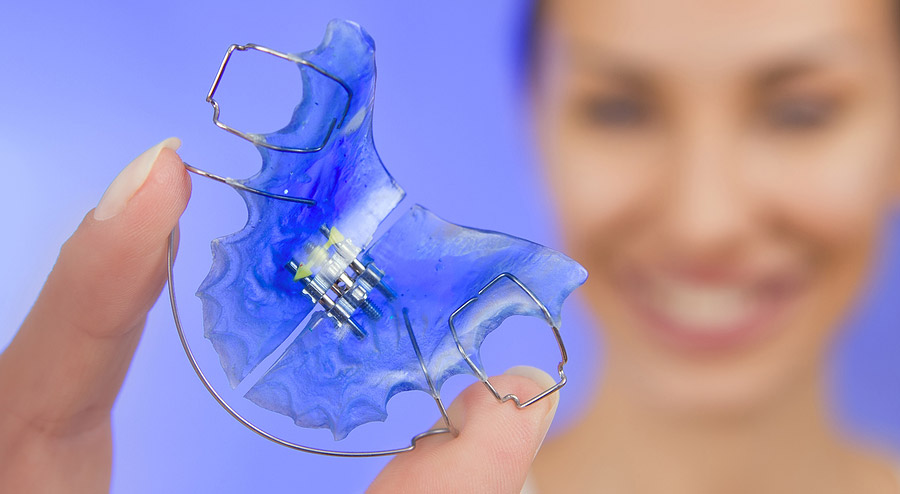How Does a Tooth Splint Work?
 Though we all lose primary teeth, it can be very unnerving to have loose permanent teeth. No one wants to lose one of their adult teeth. Fortunately, dentists have several ways in which they can save a tooth or loose teeth due to injury, periodontal disease, or bruxism. If they are going to try to avoid pulling the tooth out, the dentist will likely install a tooth splint. Splints are usually permanent, but there are some cases such as minor trauma or early stage periodontal disease where there is reason to believe the situation can be reversed with the proper care. In these cases, a “temporary” splinting technique may be used. This may be as simple as installing a traditional splint and then removing it when the tooth has regained stability.
Though we all lose primary teeth, it can be very unnerving to have loose permanent teeth. No one wants to lose one of their adult teeth. Fortunately, dentists have several ways in which they can save a tooth or loose teeth due to injury, periodontal disease, or bruxism. If they are going to try to avoid pulling the tooth out, the dentist will likely install a tooth splint. Splints are usually permanent, but there are some cases such as minor trauma or early stage periodontal disease where there is reason to believe the situation can be reversed with the proper care. In these cases, a “temporary” splinting technique may be used. This may be as simple as installing a traditional splint and then removing it when the tooth has regained stability.
The general purpose of a tooth splint is to keep the tooth stable by using the splint and surrounding teeth for support. Splinting may or may not be appropriate based on the situation, so the dentist will make a thorough evaluation of the tooth, the surrounding teeth, and even the cause of looseness before they decide to go in this direction. For example, it would not make sense to splint a tooth that is loose due to bruxism or teeth grinding, as this would actually put the attached teeth at more risk of being similarly damaged. In some cases, treating the cause of the loose tooth rather than the tooth itself can actually be enough to reverse the damage.
Extracoronal Splints
There are several different types of splinting procedures. The dentist will make their choice based on the prognosis for the tooth and the general condition of the mouth. The majority of these options fall under the label of “extracoronal splints.” This simply means that the splint is attached to the exterior of teeth. The teeth do not usually require any extra preparation for extracoronal splints.
In a basic extracoronal splint, a stabilizing device such as a wire or fiber-reinforced ribbon is attached to the backside of a series of teeth, including the loose one. The adhesive may vary but is usually dental cement or resin for permanent installations. The result of this type of splint is the same concept behind a fence, the crossbeam and posts (teeth) work in tandem to create a stronger structure.
There are variations of the extracoronal splint that may be used instead of doing a full wire around the arch of the jaw. If the tooth is not overly loose, then it can be glued together to the two teeth on either side with composite resin. This resin is roughly tooth-colored so it should not be overly obvious unless it is being done on the front teeth.
Multiple crowns, onlays, or a set of veneers, can also be used as splints. For example, the set of veneers is fused together during the fabrication process and then is cemented to the front of the teeth. This has the added advantage of improving the overall aesthetics of the smile but is also more expensive than splinting with a wire or resin. Veneers are also a permanent endeavor, as once they have been installed the teeth will always require some sort of covering or will eventually need to be removed. This is because prior to installing the veneers the dentist will likely need to grind down the surface of the teeth a small amount to make sure the veneers are flush and do not add any bulk to the teeth.
For increased stability, a permanent splint will use a combination of crowns and splints. A crown is placed over the loose tooth and splinted to other crowns on either side, almost like a bridge but retaining the problem tooth.
Intracoronal Splints

When installing an intracoronal splint the area will need to be numbed while the dentist drills the channel. The wire or splint material will then be run through the channel and affixed with dental cement or resin. The bite will then be checked to ensure that the splint is properly sunken and will not be an interference. After the cement or resin has been cured the dentist will grind away any excess to further smooth out the working surface.
“Anytime you have something extra in your mouth, like a splint, it takes a little more effort to keep everything clean. Take a little extra time to care for your teeth while using a splint, and you’ll avoid any further complications.”
Afterward
Once a splint has been installed it should be stable enough to resume normal eating and drinking activity. If there are any limitations your dentist will let you know before you leave but, in general, splints are a very sturdy installation. As with other cemented devices, it is likely not a good idea to chew gum or eat overly sticky foods like caramel.
If the goal is to allow the tooth and gum to heal to the point where the splint can be removed, then it will be imperative to take proper care of your gums to facilitate proper healing and reattachment. There are plenty of home remedies that can help reduce swelling and irritation in the gums, as well as fight mouth bacteria that would otherwise hinder progress. With all splinting, it is very important to practice good oral hygiene. The areas where the splint has been attached can be at higher risk for cavities, and in intracoronal installations, the removal of enamel means that there is less protection before the dentin and root would be affected.
While they are not exactly a walk in the park, having a dental splint installed is much more preferable than having to remove the tooth. Splints are simple and are much less invasive than getting a root canal and implant when a tooth is lost. If you have any concerns about the procedure or aftereffects your dentist should have no problems answering your questions.
Medically Fact-Checked & Written by Our Dental Editorial Team
You can read more about our editorial guidelines by clicking this link and learn more about the Emergency Dentists USA editorial team here.


